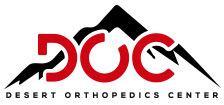Elbow Tendonitis
What are Elbow Tendons?
Elbow tendons are thick, fibrous cords of tissue that connect the forearm and upper arm muscles to the elbow.
What is Elbow Tendonitis?
Elbow tendonitis is a condition of inflammation or irritation of the elbow tendons.
Types of Elbow Tendonitis
The common types of elbow tendonitis are:
- Medial epicondylitis or golfer’s elbow, which is characterized by the inflammation of the tendons that connect the forearm muscles to a bony protrusion on the inside of the elbow.
- Lateral epicondylitis or tennis elbow, which is characterized by inflammation of the tendons that connect the forearm muscles to a bony protrusion on the outside of the elbow.
Causes of Elbow Tendonitis
Although elbow tendonitis may occur due to sudden injury, in most cases, the condition develops due to repetitive stress during activities such as:
- Manual labor
- Racquet sports
- Certain hobbies
- Typing
Symptoms of Elbow Tendonitis
The symptoms of elbow tendonitis are:
- Pain which is exacerbated with flexing or extending the elbow
- Mild swelling
- Redness
What if Elbow Tendonitis is left Untreated?
Elbow tendonitis may start out as a minor discomfort or annoyance, but if left untreated, the condition can worsen to the point of significant pain, resulting in the inability to work, play sports or perform routine activities of daily living.
Diagnosis of Elbow Tendonitis
A diagnosis of elbow tendonitis is based on your signs and symptoms and a thorough physical examination. Imaging studies such as X-rays may be ordered if necessary.
Treatment of Elbow Tendonitis
The various treatment options for elbow tendonitis include:
- RICE therapy: RICE is an acronym which stands for Rest, Ice, Compression and E Rest is essential for tendon healing and recovery. Icing and compression help decrease pain and swelling. Elevation of the elbow above the level of the heart helps to minimize swelling.
- Pain-relieving medications: Over-the-counter or prescription medications may be prescribed for a short time as recommended by your doctor to help control painful symptoms. Topical anti-inflammatory creams or pain-relieving injections may also be administered.
- Physical therapy: Specific exercises to strengthen the surrounding muscles and improve range of motion will help reduce pain and protect the tendon from further injury.
- Corticosteroid injections: Injecting corticosteroid medication into the inflamed tendon may be effective in reducing inflammation and speeding up the healing process.
- Platelet rich plasma therapy: This is an advanced therapy which has proven to be effective in the treatment of chronic tendonitis. A small amount of your own blood is drawn and processed to produce platelet rich plasma, which is injected into the tendon for enhanced healing.
- Surgical tendon repair: For large tears in the tendon, surgical repair and reattachment of the tendon to bone may be necessary.
Prevention of Elbow Tendonitis
Elbow tendonitis can be prevented by:
- Avoiding or modifying activities that cause elbow pain
- Improving your technique while playing sports to prevent unnecessary stress on the tendon
- Performing warm-up exercises before any strenuous activity
- Performing gentle stretches to improve elbow range of motion after exercise
- Optimizing workplace ergonomics








